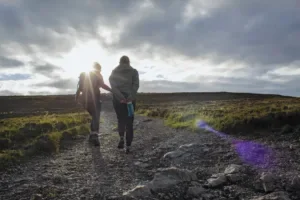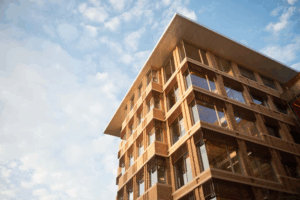Imagine a place where people are mapping the relationships of all life on Earth, giving children a voice in court, teaching students how to train their lenses on the world, scouring the deep sea for ancient shipwrecks, ensuring kids have a connection with nature and making modern art sculptures accessible.
That place is The University of Texas at Austin, and it’s all in a day’s work for the university’s students, faculty and staff, who are changing the world through research and education.
With new feature stories on the university’s home page almost every Monday of the year, we shine the spotlight on the people, ideas, activities and programs that make the university such a distinctive place.
We’ve chosen 12 stories from 2008 to offer to our readers again. If you like these, check out our features archives and read more. And watch most every Monday for new stories in 2009. After more than 325 stories, we’ve just scratched the surface in revealing the range of what makes the university a center of excitement, impact and discovery.


ASSEMBLING THE TREE OF LIFE: When Charles Darwin published “The Origin of Species” in 1859, he included only a single diagram to illustrate how multiple species can evolve from a common ancestor. He called it the “tree of life,” and he predicted that one day science would be able to tell the whole story of how a single organism evolved into the tens of millions of distinct species that populate the Earth. That day is getting closer and closer as university biologists, computer scientists and paleontologists map out the family tree of the world as part of the National Science Foundation’s Assembling the Tree of Life project.


BOUNCING BACK: In-laws arrive tomorrow for the holidays, gifts need to be wrapped, the dog’s got a stomach bug and your car just died. Are you going to bend under the pressure or break? In studies of military wives, college students and corporate employees, College of Education professor Mary Steinhardt has found that quality of life is largely determined by your response to adversity. A study Steinhardt started in early 2008 is showing that, in addition to helping you handle the in-laws, mental and emotional resilience can even improve self-management of a chronic illness like type 2 diabetes.


A DIGNIFIED DEATH: Most Americans are not comfortable talking about death and dying, but recently more and more people are trying to achieve some kind of control over end-of-life issues. Dr. Debbie Volker, associate professor of nursing, has been studying what constitutes a dignified death for the last several years and says people have much more in common than they do differences when facing death. Maintaining a sense of control is cited as a core component of a dignified death, says Volker, a former oncology nurse.


EDGE OF THE DESERT: With global population expected to grow from six to nine billion by mid-century, the world faces an unsustainable demand for water. Texas, a semi-arid region like many of the world’s most heavily populated regions, offers an excellent natural laboratory for studying the water challenges that plague communities worldwide. Researchers at The University of Texas at Austin are at the forefront of scientific efforts to ensure a sustainable global water supply.


FIRST BLOOM: For many, nature has become a place to visit on vacations or weekends. Yet even these “quality time” visits that link people to the larger world are becoming less common, placing Americans at risk of losing their connection to green landscapes. This trend can foster forgetfulness about our role in ensuring the natural world’s survival, something environmental educators at the university’s Lady Bird Johnson Wildflower Center are working to combat. Since January 2008, they have helped train staff from 11 urban national parks and from Boys and Girls Clubs on how to reconnect children with nature, with future training workshops on the horizon.


PHANTOMS OF THE DEEP: In the depths of the Black Sea lies a landscape of eternal darkness. Because the oxygen-less environment cannot support living organisms, there is an extraordinary opportunity for preservation of ancient shipwrecks. Join nautical archaeologist Dan Davis and legendary oceanographer Dr. Robert Ballard on their journey to excavate some of the oldest shipwrecks ever found.


REAL TO REEL: Thanks to advances in technology that make equipment more affordable and portable, nonfiction media, such as documentary film and photography, are experiencing a renaissance. Faculty in The University of Texas at Austin Documentary Center are using the genre to highlight social and contemporary issues by providing a window into situations that people otherwise would not experience. Students are not only honing their technical skills with world class filmmakers and photographers, but they are learning how to respect the power of the medium and how to listen and empathize with their subjects.


SCIENCE AT THE CENTER OF THE STORM: Six days before Hurricane Ike, the third most destructive hurricane in U.S. history, crashed into the Texas coast, teams of scientists were working feverishly on cutting-edge storm forecasting and evacuation methods to safeguard coastal communities. In the center of it all, coordinating and aiding that effort, was The University of Texas at Austin–its scientists, its supercomputers and its leadership–charting a path to the improved predictive methods of tomorrow.


TAKE IT OUTSIDE: For the first time in its history, The University of Texas at Austin established a comprehensive policy for public art acquisitions. A new public art program called Landmarks in the College of Fine Arts brought sculptures from New York City’s Metropolitan Museum of Art and a monumental sculpture from artist Mark di Suvero to the campus in its inaugural year. These works and future acquisitions are expected to change the way students, faculty, staff and visitors see and experience campus.


‘TIL DEATH DO US PART?: So, why aren’t you married? It’s a question dreaded by singletons. The underlying assumption of the awkward inquiry: there is something wrong with being single. But does marriage mean you will live happily, and healthfully, ever after? Four sociologists reveal results from their research on the health consequences of marriage–and what they found may surprise you.


WHO SPEAKS FOR THE CHILD?: By signing an order to remove more than 450 children from the Yearning for Zion Ranch in April 2008, Judge Barbara Walther initiated the largest child custody case in U.S. history. Amid the media frenzy, Walther faced another task: securing an attorney for each of those children and making sure each of the attorneys had the appropriate training. To do this, she turned to the Children’s Rights Clinic at The University of Texas at Austin’s School of Law. For nearly 30 years, the clinic has been helping lawyers learn how to “speak for the child.”


YOU’RE INVITED: Few universities in the nation offer their campus community and the public such vast resources as The University of Texas at Austin. World-class museums, extensive library collections, numerous performance venues and cultural centers on a historic and architecturally engaging urban campus make the university a destination for Texans and for people across the nation and around the world. Here’s a brief look at some of the remarkable holdings and qualities that make the university a special place for students, faculty, staff and visitors.



